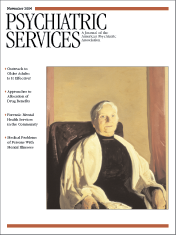OASIS Guide to Asperger Syndrome: Advice, Support, Insights, and Inspiration • A Parents' Guide to Asperger Syndrome and High-Functioning Autism: How to Meet the Challenges and Help Your Child Thrive
Each of these books is aimed primarily at the parents of persons with Asperger syndrome. One is written by professionals who are well known in the field, the other by parents whose OASIS (Online Asperger Syndrome Information and Support) Web site has become one of the most visited Asperger destinations. The OASIS Guide to Asperger Syndrome: Advice, Support, Insight, and Inspiration is based partly on surveys of parents visiting the OASIS site. This book is about 50 percent longer and about 50 percent more expensive than the other book reviewed here.
Neither book addresses adolescence or adulthood satisfactorily: The OASIS Guide states that little is known about the period beyond childhood, although it may be more correct to say that the authors are not so familiar with that period. Sally Ozonoff and her coauthors, in A Parents' Guide to Asperger Syndrome and High-Functioning Autism: How to Meet the Challenges and Help Your Child Thrive, do give a brief overview of what parents might expect. They acknowledge their concentration on childhood in their book, as reflected in the book's subtitle.
Both books are written with a U.S. audience in mind. This may seem a small consideration, but, in fact, education and service provision vary considerably from country to country. Both books, quite rightly, recognize that parents have to advocate for their children who have Asperger syndrome and must be sophisticated users of "the system." The very helpful—and generally measured—advice to parents in both books about how to do this in the United States does not translate well to other systems, such as those in the United Kingdom.
It is a sad fact that books about Asperger syndrome still do need to provide their readers with ammunition to persuade skeptics about the disorder; this inclusion probably reflects parents' experience, even now, so many years after Asperger published his case histories. Medical practitioners continue to pour cold water on parents' concerns about children who have pervasive developmental disorders of all kinds and continue to insinuate that it is the parents themselves who need help, for being overinvolved or for creating their children's problems. The OASIS Guide also recognizes this fact, and both books provide advice to parents about which professionals can be expected to know about Asperger syndrome, what to do if a professional does not diagnose Asperger syndrome, and even what kind of assessment a competent professional should carry out.
In this area—and in most other areas—the coverage of The OASIS Guide is more thorough than that of the other book. Bashe and Kirby discuss a common problem for parents, the "undiagnosis." The most common undiagnosis in the United Kingdom is "autistic tendencies," which is intended as a means of partly ratifying parents' concerns, but it soon becomes apparent that this is not a diagnosis and will not lead to any additional support or any change in education. Moreover, this undiagnosis stands in the way of any further assessment.
Both books remain agnostic about the fundamental handicap or handicaps of Asperger syndrome yet contain substantial sections about helping these children. Inevitably, therefore, this advice tends to be unsystematic and anecdotal. Very little of the interventions described have an evidence base, and both books take a highly optimistic line about what can be done to help persons with Asperger syndrome that can sometimes seem unrealistic. It is these sections that parents will be likely to consult most often, and both books contain useful advice. The OASIS Guide seems a bit more realistic, as is befitting of a book that is informed by questions posed by parents themselves, and gives more direct advice about how parents can handle situations. Comorbid conditions get much better coverage in the OASIS book, which gives an excellent discussion of the pros and cons of methylphenidate and other medication.
I shall be consulting both books in the future and will recommend them to any American family consulting me. If I had to choose one, it would probably be The OASIS Guide. However, I could not recommend either book to families outside the United States. There are so many subtle cultural differences, even down to the tests used, that a U.K. family would be confused.
Nor is either book the definitive introduction to Asperger syndrome for parents. Both books treat the discovery that a child has Asperger syndrome rather like travel to a foreign country. The habits of the natives are treated as curious and intriguing. The reader is made to feel optimistic about managing in this new culture. But the humanity of persons with Asperger syndrome does not come across well; nor does the fact that people with Asperger syndrome have the same aspirations, ambitions, vanities, and hatreds as the rest of us. The optimistic detachment of these books is reassuring and attractive. But parents who are overwhelmed by the negativity and pain surrounding a child who is marginalized and frustrated will not find an echo here. For that, they would be better off reading Doris Lessing's The Fifth Child.
Dr. Tantam is affiliated with the Centre for the Study of Conflict Reconciliation of the School of Health and Related Research at the University of Sheffield in Sheffield, England.



